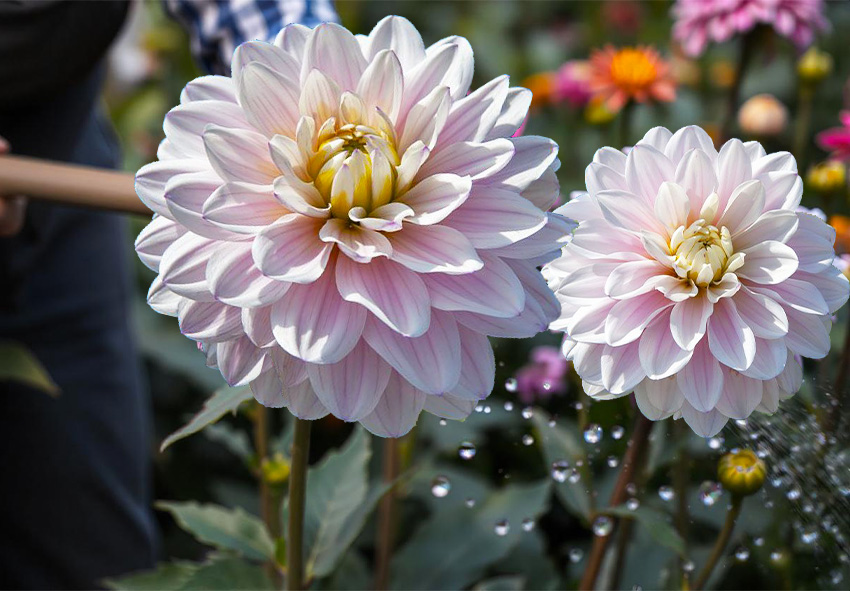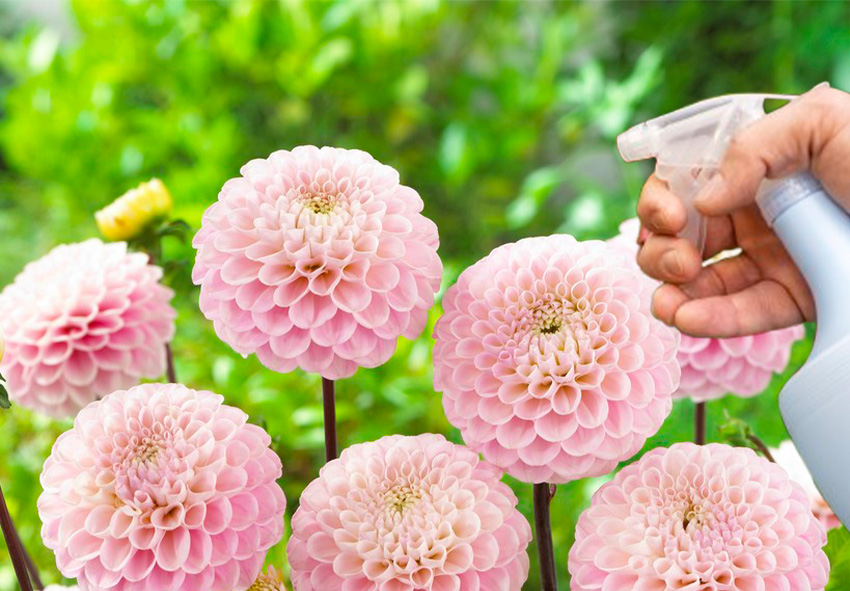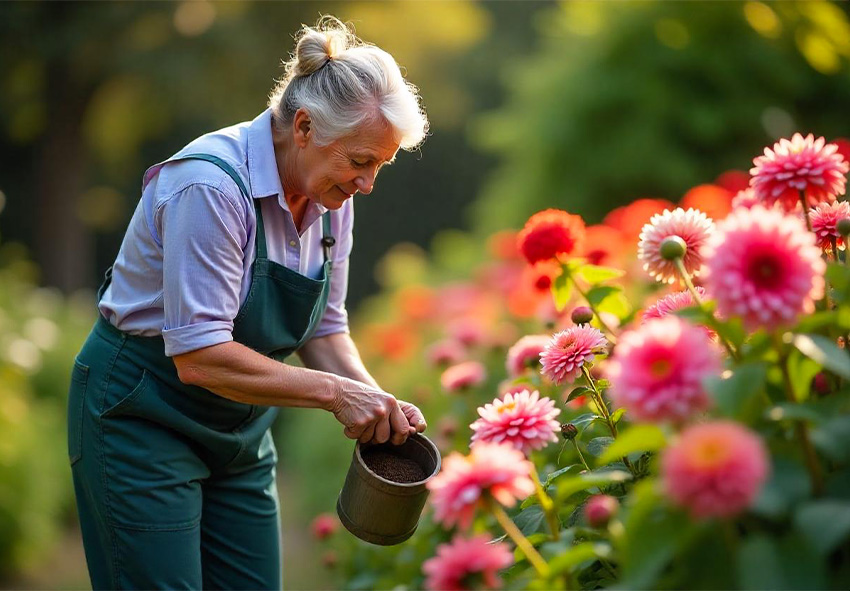Dahlias are known for their stunning blooms and vibrant colors, but not all varieties are equally easy to grow. Some require extra attention to thrive, whether due to their size, delicate petals, or susceptibility to weather conditions. This guide explores high-maintenance dahlias and the special care they need to flourish. Our gardening blog is a perfect place to find all the information you need!
Understanding High-Maintenance Dahlias

Before diving into specific varieties, it’s important to understand why some dahlias require extra care. Factors such as bloom size, stem strength, pest resistance, and environmental needs can all affect their growth and maintenance. Large-blooming varieties often require staking, while those with delicate petals may need protection from wind and rain. Certain dahlias are also more prone to fungal diseases, requiring well-draining soil and proper air circulation. By understanding these challenges, gardeners can take proactive steps to ensure their dahlias thrive.
Special Care Tips for High-Maintenance Dahlia Varieties
Caring for high-maintenance dahlia varieties requires attention to detail and consistency. These flowers, while stunning, are more vulnerable to environmental stressors and pests than their hardier counterparts. The key to success lies in understanding their unique needs and adjusting your gardening practices accordingly. From staking and pruning to soil composition and watering schedules, each variety has its own set of challenges and rewards. Below are the most demanding dahlia varieties and how to help them flourish.
Dinnerplate Dahlias – Giant Blooms, Extra Support Needed
Dinnerplate dahlias are among the most visually striking dahlia varieties, producing enormous blooms that can reach up to 12 inches in diameter. While their spectacular appearance makes them a favorite for gardeners and floral arrangements, they require special care to reach their full potential:
- Staking & Support: Use tall stakes or cages to prevent heavy blooms from weighing down and breaking the stems. Without proper support, stems can snap under the weight of these large flowers, particularly after heavy rain or strong winds. Tying the stems gently to stakes can provide additional reinforcement.
- Soil & Feeding: Provide nutrient-rich, well-draining soil with regular feeding (balanced fertilizer every 2-3 weeks). Rich soil ensures strong growth and vibrant blooms. Organic matter, such as compost or well-rotted manure, can further enhance soil quality and support healthy root development.
- Deadheading & Pruning: Regularly remove spent flowers to encourage continuous blooming. This prevents the plant from diverting energy into seed production instead of new flowers. Light pruning of lower leaves can also improve air circulation and reduce the risk of fungal diseases.
- Watering Needs: Keep the soil consistently moist but not waterlogged. Water deeply at the base of the plant to encourage strong root growth, especially during hot summer months. Mulching around the base helps retain moisture and regulate soil temperature.
Cactus & Semi-Cactus Dahlias – Spiky Blooms, Wind-Sensitive
The distinctive, curled petals of Cactus and Semi-Cactus Dahlias add drama to any garden, but they are particularly vulnerable to wind damage.When it comes to these special varieties, planting dahlias in a sheltered location or using garden netting for support is really important. Their thin, spiky petals can be easily damaged by strong winds, so positioning them near a fence, wall, or other plants that provide some barrier from the wind is beneficial. Avoid overwatering; they prefer slightly drier conditions to prevent root rot. Using a soaker hose or drip irrigation system can help maintain consistent moisture without oversaturating the roots.
Watch for aphids and thrips, which can damage delicate petals. Regularly inspect the plants and apply neem oil or insecticidal soap as needed. Companion planting with marigolds or other natural pest-repelling flowers can also help keep harmful insects at bay. Ensure at least 6-8 hours of direct sunlight daily. These dahlias perform best in warm, sunny locations where they receive ample light exposure to support their intricate petal development.
Pompon & Ball Dahlias – Compact Blooms, Susceptible to Humidity

Pompon and ball dahlias produce small, rounded blooms that hold their shape well, making them excellent choices for floral displays. However, their dense flower structure makes them prone to moisture retention, which can create the perfect environment for fungal diseases. Humid conditions exacerbate this problem, requiring careful placement and maintenance to keep them healthy:
- Preventing Fungal Issues: Ensure good air circulation between plants and avoid overhead watering. Poor airflow can lead to mildew and rot.
- Deadheading & Pruning: Regularly remove old flowers to prevent moisture buildup. Pruning lower leaves can also improve air circulation.
- Balanced Feeding: Avoid excessive nitrogen, which can promote leafy growth over flowers. A bloom-boosting fertilizer with phosphorus can encourage more blossoms.
Tree Dahlias (Dahlia imperialis) – Tall & Majestic, Late Bloomers
Towering up to 15 feet, Tree dahlias (Dahlia imperialis) create an impressive display but require ample space, strong support, and an extended growing season. Because they bloom late in the fall, gardeners in regions with early frosts may struggle to see them flower before cold temperatures arrive. Protecting them from strong winds with stakes or a sheltered planting spot is essential to avoid breakage.
Tree dahlias thrive in warm climates, where they can reach their full height and bloom before the onset of frost. In colder zones, tubers should be lifted and stored indoors during winter to ensure they survive until the next growing season. Regular pruning helps manage their size and promotes more abundant flowering.
Collarette Dahlias – Delicate Petals, Pest-Prone
With their unique petal formation, collarette dahlias attract pollinators but also pests:
- Pest Management: Regularly inspect for aphids, spider mites, and slugs. Use neem oil or insecticidal soap as needed to keep pests at bay.
- Sunlight Needs: Plant in full sun to maintain vibrant colors and strong growth. These dahlias thrive in at least six hours of direct sunlight per day.
- Regular Deadheading: Encourage more blooms by removing faded flowers frequently. This keeps the plant producing fresh blooms throughout the season.
Waterlily Dahlias – Elegant Blooms, Sensitive to Overwatering

These elegant dahlias, resembling waterlilies, thrive in well-draining soil that retains enough moisture without becoming waterlogged. Overwatering can lead to tuber rot, so it’s essential to allow the soil to dry slightly between watering sessions. Raised beds are a great option for improving drainage, particularly in areas with heavy rainfall. Mulching around the base of the plant helps retain moisture while keeping roots protected from extreme temperatures.
Despite their refined appearance, waterlily dahlias are relatively resilient as long as their watering and soil conditions are managed correctly. Ensuring a deep but infrequent watering schedule allows their roots to establish themselves properly while reducing the likelihood of disease.
General Care Tips for High-Maintenance Dahlias
Regardless of variety, all high-maintenance dahlias benefit from:
- Proper spacing
- Regular feeding
- Seasonal tuber storage
Providing adequate space between plants allows for better airflow, reducing the risk of fungal infections. A balanced fertilizer regimen ensures healthy growth and stunning flowers, while regular deadheading promotes continuous blooming. For gardeners in colder climates, lifting and storing tubers over winter prevents frost damage and guarantees strong plants for the following year.
Conclusion
While these dahlia varieties require extra care, the stunning blooms they produce make the effort worthwhile. By providing the right support, soil conditions, and maintenance, you can enjoy a spectacular dahlia garden that flourishes throughout the season. With proper care, even the most high-maintenance dahlias will reward you with breathtaking flowers year after year.
Frequently Asked Questions (FAQs) about High-Maintenance Dahlias
1. Why do some dahlia varieties require more care than others?
Some dahlia varieties have larger blooms, delicate petal structures, or weaker stems, making them more susceptible to weather damage, pests, and diseases. Others have specific soil, watering, or staking requirements to support their growth. Providing proper care ensures they bloom healthily and maintain their striking appearance throughout the growing season.
2. How can I protect my dahlias from wind damage?
To prevent wind damage, plant dahlias in a sheltered location or use stakes and garden netting for support. Taller varieties, like Dinnerplate and Tree Dahlias, benefit from strong staking. You can also plant wind-resistant companion plants nearby to provide a natural barrier and help reduce exposure to harsh weather conditions.
3. What’s the best way to water high-maintenance dahlias?
Dahlias prefer deep but infrequent watering to encourage strong root growth. Water at the base to prevent fungal diseases and avoid overhead watering, which can lead to moisture buildup on leaves and petals. Well-draining soil is essential, especially for Waterlily Dahlias, which are prone to rot if overwatered.
4. How do I prevent pests from damaging my dahlias?
Regularly inspect plants for aphids, thrips, and spider mites, especially on delicate varieties like Collarette Dahlias. Use neem oil, insecticidal soap, or introduce beneficial insects like ladybugs to control pests naturally. Keeping the garden clean, removing debris, and promoting air circulation can also reduce pest infestations.
5. How can I order Holland dahlias from your online store?
Ordering Holland dahlias from our online store Dutch-bulbs.com is simple and convenient. Visit our website and browse our selection of dahlia varieties, including those sourced from Holland for their exceptional quality and beauty. Once your order is confirmed, our team will carefully pack and ship your Holland dahlia bulbs directly to your doorstep, ensuring they arrive fresh and ready for planting.
Published: 11.02.2025
